7 Kitchen Island Design Tips to Make Your Kitchen Irresistible

The kitchen is often considered the heart of the home, a space where families and friends come together to cook, eat, and socialise. It's no wonder that homeowners are always looking for ways to make their kitchens more functional, stylish, and inviting.
One popular trend that has emerged in recent years is the kitchen island. An island can serve many purposes in a kitchen, from providing extra counter space and storage to acting as a focal point for the room's design.
Whether a professional chef or a casual cook, a kitchen island can transform your kitchen into a functional and stylish space. So, let's dive in and discover the perfect kitchen island for your home.
Kitchen Islands at a Glance
Okay, so picture this: you're in your kitchen, making your favourite dish, but you're running out of counter space to work your magic. What do you do? Enter the kitchen island, your new BFF in the kitchen game.
A kitchen island is a freestanding countertop in the middle of your kitchen, providing extra workspace, storage, and seating. It's like the superhero of kitchen fixtures, swooping in to save the day when you need it most.
But here's the cool thing: kitchen islands come in all shapes, sizes, and materials, meaning you can customise them to fit your style and needs. Want a classic wood look or something more modern and edgy? No problem, they've got it all. You can add a sink, stovetop, or oven for the ultimate cooking setup.
And let's be honest, who doesn't love a good kitchen island? It's the perfect spot for a casual meal or to hang out with friends while you cook up a storm. With the right accessories, like funky stools and pendant lights, your kitchen island can become the star of the show, bringing all the vibes to your kitchen.
Not only does a kitchen island provide additional worktop space, but it also offers extra storage space. With cupboards and drawers built into the base of the island, you can keep your cookware, utensils, and even small appliances stored away and easily accessible.
This is especially useful in smaller kitchens where storage space may be limited. Adding a kitchen island with built-in storage lets you keep your kitchen clutter-free and organised while having everything you need within arm's reach.
But even in larger kitchens, a kitchen island can provide additional storage space that's both stylish and functional. You can choose from a variety of finishes and materials for the cupboards and drawers, from classic wood to sleek metal, to match your kitchen's decor and vibe.
In short, a kitchen island isn't just a pretty centrepiece for your kitchen, it's also a practical addition that can provide you with extra worktop and storage space and even a spot to entertain. So, if you're looking to upgrade your kitchen game, a kitchen island might be the way to go.
So next time you're in the market for a kitchen upgrade, think about adding a kitchen island to your space. Trust us; it's a game-changer.
Ideas and Tips for an Irresistible Kitchen Island
Now that we've established what a kitchen island is and how it can benefit your kitchen, let's delve into the fun part: design ideas and tips. With so many options, choosing the perfect kitchen island design for your space can be daunting. But fear not; we've got you covered.
Let's explore various design ideas and tips for kitchen islands to elevate your kitchen's aesthetic and functionality. From classic and timeless designs to bold and modern ones, we have something for every taste and style. So, whether you're renovating your kitchen or just looking for a small update, read on for inspiration.
Consider the Waterfall Edge

If you're searching for a sleek and modern kitchen island design, then you may want to consider the waterfall edge. This design creates a seamless transition from the top of the island down to the floor, producing a continuous, flowing look that's both stunning and sophisticated.
To achieve the waterfall edge, the worktop material is extended down the sides of the island, creating a seamless connection between the horizontal and vertical surfaces. This design adds a unique visual element to your kitchen and creates a sense of continuity and flow.
One of the advantages of the waterfall edge design is its versatility. It can be incorporated into various kitchen styles, from modern and minimalistic to more traditional and rustic. As it's available in a range of materials, including marble, granite, and quartz, you can select a finish that complements your taste and the overall style.
Another benefit of the waterfall edge design is that it can create the illusion of more space in your kitchen. Extending the worktop down to the floor gives the impression that the island is larger than it actually is, making it a great option for smaller kitchens.
When choosing a material for your waterfall edge, it's important to consider both aesthetics and practicality. For example, marble is beautiful and luxurious but requires regular maintenance to prevent staining and scratching. On the other hand, quartz is a durable and low-maintenance option available in various finishes.
In terms of installation, the waterfall edge can be seamlessly integrated into your existing kitchen layout. It's important to work with a professional contractor to ensure the design is executed correctly, as precise measurements and a skilled hand are necessary to achieve the desired effect.
Overall, the waterfall edge is a stunning and sophisticated design option for your kitchen island. Its seamless transition from the worktop to the floor creates a sense of flow and continuity. Its versatility and material options make it suitable for various kitchen styles. So, if you're searching for a modern and elegant design for your kitchen island, consider the waterfall edge.
Get Creative with Seating

Kitchen islands aren't just for food prep but also a popular spot for casual dining and socialising. So, it's essential to consider the seating options when designing your kitchen island. By incorporating seating, you can transform your kitchen island into a multifunctional space perfect for entertaining guests or enjoying a meal with family.
When it comes to seating options for your kitchen island, the possibilities are endless. You could opt for traditional bar stools or counter-height chairs, but don't be afraid to get creative with your seating choices. Consider incorporating a mix of seating styles, such as benches, built-in banquettes, or even colourful and funky chairs that add a pop of personality to your kitchen.
If you have a large kitchen island, you may consider adding a dining table to create an integrated dining space. This design is perfect for those who enjoy hosting dinner parties or large gatherings. Plus, it's a great way to maximise your kitchen's functionality and make the most of your space.
Another option to consider is a combination of built-in seating and freestanding chairs. Combining different seating options allows you to create a dynamic and visually appealing design that adds interest and depth to your kitchen island.
When selecting seating options, it's essential to consider aesthetics and practicality. Comfort should be a top priority, as guests will likely sit for extended periods. The materials used should be durable and easy to clean for your convenience.
Innovate with Shapes
A kitchen island's shape can determine how much counter space and storage you get, how easy it is to move around, and how well it fits the rest of your kitchen. So, it's worth considering a range of shapes to get the most out of your kitchen island.
One popular shape for kitchen islands is the T-shape. This shape is particularly useful for larger kitchens, providing ample counter space and storage while creating a natural traffic flow. The T-shape design allows multiple people to work in the kitchen simultaneously, making it ideal for families or those who love entertaining.
Another popular shape is the L-shape. This design can be particularly useful in smaller kitchens as it allows maximum use of available space. The L-shaped design is also great for creating an open-concept kitchen and living area, as it can easily integrate with the surrounding space. It allows for more counter space and storage and an opportunity to incorporate seating options.
Consider a curved or circular design if you're looking for a unique shape for your kitchen island. These shapes can add a touch of elegance and sophistication to your kitchen and create a focal point. However, it's worth noting that curved and circular designs may be more challenging to incorporate into smaller spaces.
A G-shape or U-shape design may be the perfect choice for those who love to cook and entertain. These shapes provide significant counter space, storage, and room to move around, making it easy to prepare and serve food while interacting with guests. However, it's worth considering the overall size of the island and how it fits with the rest of your kitchen before committing to this design.
When considering the shape of your kitchen island, it's essential to think about how it will fit with the rest of your kitchen's design. The island should complement the existing layout, colours, and style rather than clash. It's also worth considering any specific needs you may have, such as extra storage or seating, when choosing a shape.
From the practical T-shape and L-shape to the more unique curved and circular designs, there's a shape to suit every kitchen and every homeowner's style. By getting creative with the shape of your kitchen island, you can maximise functionality and create a visually stunning focal point that will make your kitchen irresistible.
Leave Ample Space Around
Many homeowners make the mistake of placing their island too close to their other kitchen elements, such as the stove or fridge, which can make the space feel cramped and hinder its functionality.
To avoid this mistake, leaving ample space around the island is essential. This means there should be at least 91cm of clearance on all sides of the island to allow easy movement and prevent potential safety hazards. It's also important to consider the flow of foot traffic around the island, particularly if you have a large family or frequently entertain guests.
Another important factor to consider is the placement of other kitchen elements, such as the sink or hob. Ideally, these elements should be located close to the island but not so close that they interfere with its functionality or safety. This can be achieved by strategically placing the island in the kitchen and designing the surrounding space accordingly.
When designing your kitchen island, it's important to keep in mind your kitchen's overall size and layout. A smaller island with less clearance may be more appropriate with a smaller kitchen. Conversely, if you have a larger kitchen, a larger island with more clearance may be better suited to your needs.
Ultimately, the goal of leaving ample space around your kitchen island is to create a functional and inviting space that allows for easy movement and enhances the overall flow of your kitchen. So, take the time to consider your kitchen layout and design your island accordingly carefully.
Use Movable Kitchen Islands is Space is Limited
If you have limited space in your kitchen, a traditional fixed island may not be the best option for you. In this case, a movable island can be a great alternative to add extra counter space and storage without sacrificing valuable floor space.
A movable island can be easily moved around your kitchen, allowing you to adjust your space to suit your needs. This is especially useful for those who frequently entertain guests or need extra counter space for food prep. The island can be tucked away in a corner or against a wall when not in use, freeing up valuable floor space.
When choosing a movable island, there are a few key factors to consider. First, consider the size and weight of the island. You want a unit that is sturdy and able to support the weight of your kitchen appliances and utensils but also lightweight enough to be easily moved around.
Second, consider the storage options. Just because the island is movable doesn't mean it can't offer plenty of storage space. Look for units with cabinets, shelves, or drawers that can be used to store your pots, pans, and other kitchen essentials.
Finally, consider the design of the island. You want a unit that complements the overall design of your kitchen and doesn't stick out like a sore thumb. Look for units that come in various colours and styles to find one that matches your existing decor.
One of the greatest benefits of a movable island is its versatility. It can be used as a kitchen island, a serving table, or a bar cart for entertaining guests. And when you're not using it, you can easily move it out of the way to create more floor space in your kitchen.
Pay Attention to the Lighting
Proper lighting can make or break the look and functionality of your kitchen. Good lighting can add warmth, create a cosy atmosphere, and highlight the beauty of your kitchen island.
The first step is to assess the natural light in your kitchen. If you have a lot of natural light, you may not need as many artificial lights. However, if your kitchen lacks natural light, you must incorporate more lighting fixtures to brighten up the space.
Task lighting is essential for a kitchen island. You want to see what you are doing when you chop vegetables, mix ingredients, or read a recipe. Pendant lights are a popular choice for task lighting above a kitchen island. They provide a concentrated light source and add an attractive decorative element to your kitchen.

Another option for task lighting is under-cabinet lighting. This type of lighting is discreet and illuminates the island's countertop and workspace. It is particularly useful if you have cabinets above your island that block out natural light.
Ambient lighting is another element to consider. It sets the mood for your kitchen and creates a welcoming atmosphere. Chandeliers, recessed lighting, or wall sconces are great options for ambient lighting above or around the kitchen island.
Accent lighting is a fantastic choice if you want to showcase your kitchen island. It draws the eye to the island and highlights its beauty. You can achieve this by adding LED strip lighting under the countertop, which creates a beautiful glow and enhances the island's design.
When choosing lighting fixtures for your kitchen island, think about the style of your kitchen. You want to choose fixtures that complement your kitchen's design and colour scheme. For example, if you have a modern kitchen, you may want to consider sleek, minimalistic lighting fixtures. Alternatively, if you have a traditional kitchen, you may want to choose a chandelier or pendant lights with a more ornate design.
Lighting is a crucial aspect of kitchen island design. It not only enhances the functionality of your kitchen but also adds beauty and style.By paying attention to lighting, you can create a beautiful, functional, and inviting kitchen you'll love spending time in.
Make Your Kitchen Island Stand Out
The colour of your kitchen island can greatly impact the overall look and feel of your kitchen. Choosing the right colour scheme can create a cohesive design and make your island the room's focal point. One way to achieve this is by using contrasting colours.
Contrasting colours are opposite on the colour wheel, such as black and white, blue and orange, or red and green. Using contrasting colours can create a bold and dramatic effect, especially if you have a neutral-coloured kitchen. It can also make your island stand out and add character to your space.
When choosing colours, consider the style and mood you want to create. For a modern and sleek look, use contrasting colours that are bold and bright. If you want a more subdued and classic look, consider using muted tones of contrasting colours or a neutral colour with a pop of contrasting colour.
Another way to incorporate contrasting colours is using different materials for your island. For example, consider painting the island's base in a contrasting colour if you have a wooden countertop. This can create a unique and eye-catching look.
When choosing contrasting colours, make sure they complement each other and don't clash. Test the colours together before committing to them to ensure they work well together. You can also consult with a professional interior designer for expert advice.
In addition to colours, consider using different textures and patterns to add depth and interest to your island. Mixing and matching different materials can create a unique and eclectic look that reflects your style.

Final Thoughts
Kitchen islands add functionality and serve as statement pieces for any kitchen. From considering the shape and size to the material and colour, every aspect plays a vital role in creating a kitchen island that stands out and complements your space. The design tips discussed in this article are just a few options available, but they provide a starting point to kick-start your creativity and design a kitchen island that perfectly fits your needs.
Remember, a kitchen island isn't just a piece of furniture; it's an opportunity to add personality and style to your kitchen while enhancing its functionality. So, whether you're a chef who needs ample counter space or simply wants to add a focal point to their kitchen, a well-designed kitchen island can make all the difference.
The Role of Rugs in Kitchen Island Design
Kitchen islands have become the heart of the modern home, serving as a multi-functional hub for cooking, dining, and socializing. While the island itself is an essential element, the addition of a well-chosen rug can elevate the overall design, adding warmth, texture, and visual interest to the space.
Rugs can help define the boundaries of the kitchen island, creating a cozy and inviting seating area. They can also anchor the design, tying together the various elements of the kitchen and creating a cohesive, harmonious look. By incorporating a stylish rug, you can transform your kitchen island into a focal point that reflects your personal taste and enhances the overall aesthetic of your kitchen.
Choosing the Right Rug for Your Kitchen Island
When it comes to selecting the perfect rug for your kitchen island, there are a few key factors to consider:
-
Size and Proportion: The rug should be large enough to fit comfortably under the kitchen island, with at least 18-24 inches of clearance on all sides. This ensures the rug doesn't look too small or overwhelmed by the island.
-
Material and Durability: Kitchen islands are high-traffic areas, so it's essential to choose a rug made of durable, easy-to-clean materials like wool, cotton, or synthetic fibers. Avoid delicate fabrics that may stain or wear down quickly.
-
Texture and Pattern: The texture and pattern of the rug can add visual interest and personality to the space. Consider options that complement the overall style of your kitchen, whether that's a classic Persian-inspired pattern, a modern geometric design, or a natural, textural weave.
-
Color and Tone: The rug's color should harmonize with the existing kitchen palette, whether that's neutral tones, bold accents, or a mix of both. Choose a hue that ties the island to the surrounding cabinetry, countertops, and other design elements.
By carefully considering these factors, you can select a rug that not only looks stunning but also stands up to the demands of a busy kitchen island.
Stylish Rug Patterns and Colors for a Fashionable Space
When it comes to rug patterns and colors, the options are endless. Here are a few of my favorite stylish choices for kitchen island design:
-
Geometric Patterns: Clean, modern geometric patterns like chevrons, diamonds, or hexagons can add a striking visual element to your kitchen island. These designs work well in both contemporary and transitional spaces.
-
Vintage-Inspired Designs: Classic Persian or Turkish-inspired patterns with intricate, ornate designs can lend a timeless, sophisticated feel to your kitchen island. These rugs often feature rich, jewel-toned hues that complement traditional kitchen styles.
-
Neutral Tones: Solid or subtly patterned rugs in neutral tones like beige, gray, or cream can create a calming, versatile foundation for your kitchen island. These understated options allow other design elements to shine.
-
Pops of Color: If you're feeling bold, consider a rug with vibrant, saturated hues like deep blues, rich reds, or earthy greens. These colorful options can inject energy and personality into your kitchen island design.
Regardless of the pattern or color you choose, be sure to select a rug that complements the overall style and aesthetic of your kitchen.
Functional Aspects to Consider When Selecting a Rug for Your Kitchen Island
While the visual appeal of a rug is crucial, it's also essential to consider the practical aspects of using a rug in a kitchen setting. Here are some key functional considerations:
-
Durability and Stain Resistance: As mentioned earlier, kitchen islands are high-traffic areas that are prone to spills and messes. Choose a rug made of durable, easy-to-clean materials that can withstand the demands of a busy kitchen.
-
Slip Resistance: Look for rugs with non-slip backings or pads to prevent slipping and ensure the safety of those moving around the kitchen island.
-
Comfort and Cushioning: If you plan to use the kitchen island for extended periods, such as meal prep or dining, consider a rug with a thicker, more cushioned surface to provide comfort underfoot.
-
Ease of Maintenance: Select a rug that is easy to clean, whether that's through regular vacuuming, spot cleaning, or machine washing. This will help keep your kitchen island looking its best.
By prioritizing both the aesthetic and functional aspects of your rug selection, you can create a kitchen island that is not only visually stunning but also practical and user-friendly.
Size and Placement of Rugs for Optimal Design and Functionality
The size and placement of your kitchen island rug are crucial in achieving the right balance between design and functionality. Here are some guidelines to consider:
-
Rug Size: As mentioned earlier, the rug should be large enough to fit comfortably under the kitchen island, with at least 18-24 inches of clearance on all sides. This ensures the rug doesn't look too small or overwhelmed by the island.
-
Rug Placement: Position the rug so that it is centered under the kitchen island, with the edges aligned with the outer edges of the island. This creates a cohesive, balanced look and ensures the rug doesn't appear to be an afterthought.
-
Rug Shape: While rectangular rugs are the most common choice for kitchen islands, you can also consider round or oval shapes to add a unique, unexpected element to the design.
-
Layering Rugs: For a more dynamic, layered look, consider placing a smaller, decorative rug on top of a larger, more neutral foundation rug. This can add depth and visual interest to your kitchen island design.
By carefully considering the size and placement of your kitchen island rug, you can create a functional and visually appealing space that seamlessly integrates the rug into the overall design.
Small kitchen island design
Maximising space in compact kitchens is an art, and a small kitchen island can be the perfect solution. These versatile additions offer extra workspace and storage without overwhelming the room. Opt for slim profiles and multifunctional designs to make the most of limited square footage. Consider islands with built-in shelves, drawers, or even pull-out cutting boards. Light colours and reflective surfaces can help create an illusion of more space. Remember, even a narrow island can significantly enhance your kitchen’s functionality and aesthetic appeal.
Kitchen island design with seating
Incorporating seating into your kitchen island design transforms it into a social hub. Choose between bar stools for casual dining or lower chairs for a more formal feel. The number of seats will depend on the island’s size and your kitchen’s layout. For smaller kitchens, consider a peninsula-style island with an overhang on one side for seating. In larger spaces, L-shaped islands can accommodate more guests. Don’t forget to factor in leg room and circulation space when planning your seating arrangement.
Kitchen island design modern
Modern kitchen island designs focus on clean lines, minimalist aesthetics, and innovative functionality. Sleek materials like stainless steel, glass, and high-gloss laminates are popular choices. Consider incorporating smart storage solutions, such as hidden charging stations or pop-up outlets. Waterfall countertops, where the surface material continues down the sides of the island, create a striking contemporary look. LED lighting strips under the countertop edge can add a futuristic touch while providing practical task lighting.
Kitchen island design simple
A simple kitchen island design can be both beautiful and highly functional. Focus on clean, uncluttered lines and a neutral colour palette to create a timeless look. A basic rectangular shape with a smooth countertop and minimal detailing can suit various kitchen styles. Choose durable, easy-to-clean materials like quartz or butcher block for the worktop. Simple doesn’t mean boring – consider adding interest with textured cabinet fronts or unique hardware. Remember, the beauty of a simple design lies in its versatility and ability to complement the rest of your kitchen seamlessly.
Kitchen island design dimensions
Getting the dimensions right is crucial for a functional kitchen island. The standard height for a kitchen island is 90cm, aligning with most countertops. For seating areas, a height of 105-110cm works well with bar stools. Width can vary from 60cm for a slim island to 120cm or more for larger kitchens. Length depends on available space, but aim for at least 120cm to ensure adequate workspace. Always maintain a minimum of 90cm clearance around all sides of the island for safe and comfortable movement. Remember to consider the ‘work triangle’ – the space between your sink, hob, and refrigerator – when positioning your island.
Kitchen island Designs with stove
Incorporating a stove into your kitchen island can create an efficient cooking zone and a focal point in your kitchen. Ensure proper ventilation with a powerful overhead extractor fan to manage cooking odours and steam. Consider a slightly higher countertop around the stove for added safety, especially if you have children. Include heat-resistant materials near the cooking area to prevent damage from hot pans. Don’t forget to plan for adequate electrical and gas connections. Adding a prep sink near the stove can enhance functionality, creating a complete cooking station within your island.
What are the rules for kitchen island design?
Key rules for kitchen island design include:
- Ensure adequate clearance around the island (at least 36 inches)
- Consider the work triangle principle
- Incorporate proper lighting
- Include sufficient storage and electrical outlets
How to design an island kitchen?
To design an island kitchen:
- Assess available space
- Determine the island's primary function (prep, cooking, or dining)
- Choose appropriate materials and finishes
- Plan for efficient workflow
- Incorporate necessary appliances and fixtures
How can I make my kitchen island look nice?
Enhance your kitchen island's appearance by:
- Adding stylish pendant lighting
- Using contrasting colors or materials
- Installing decorative hardware
- Incorporating open shelving or display areas
- Selecting attractive seating options
What not to put on a kitchen island?
Avoid placing these items on your kitchen island:
- Fragile decorations that may interfere with functionality
- Oversized appliances that crowd the workspace
- Clutter or non-essential items
- Poorly placed sinks or cooktops that disrupt workflow
- Inadequate lighting fixtures
What is the golden rule for kitchen design?
The golden rule for kitchen design is the work triangle. This principle suggests that the three main work areas (sink, stove, and refrigerator) should form a triangle for optimal efficiency and functionality.
What is code for a kitchen island?
Kitchen island code requirements typically include:
- Minimum clearance of 36 inches around the island
- Proper ventilation for cooktops
- GFCI-protected outlets every 4 feet
- Adequate lighting
- Compliance with local building codes
What is the kitchen triangle rule for islands?
The kitchen triangle rule for islands states that:
- The sum of the three sides of the work triangle should be between 13 and 26 feet
- No leg of the triangle should be less than 4 feet or more than 9 feet
- The island should not intersect any leg of the triangle by more than 12 inches
How long should an island be for 4 stools?
For 4 stools, an island should be approximately 8 to 10 feet long. This allows for 24-30 inches of width per person and ensures comfortable seating without overcrowding.
How to determine kitchen island placement?
To determine kitchen island placement:
- Measure available space
- Consider the work triangle
- Ensure proper clearance (at least 36 inches) on all sides
- Align with existing architectural features
- Optimize for traffic flow and functionality
Can you have 2 islands in a kitchen?
Yes, you can have two islands in a kitchen if:
- The space is large enough (typically over 13 feet wide)
- Each island serves a distinct purpose
- There's adequate clearance between and around both islands
- The layout enhances workflow rather than hindering it
What is the minimum distance between fridge and island?
The minimum distance between a refrigerator and an island should be 42 inches. This allows enough space for the refrigerator door to open fully and provides comfortable clearance for people to move around.
Should you put a sink in the kitchen island?
Putting a sink in the kitchen island can be beneficial if:
- It improves the work triangle
- There's enough counter space on either side
- Proper plumbing can be installed
- It enhances the overall workflow
- You prefer facing guests while working at the sink
What is the best depth for an island?
The best depth for a kitchen island is typically 24 to 36 inches. This provides ample workspace while ensuring the island remains accessible from all sides. For islands with seating, consider a depth of 36 to 42 inches.
What is the recommended distance between counter and island?
The recommended distance between a counter and an island is 42 to 48 inches. This allows for comfortable movement and ensures that cabinet doors and appliances can be opened without obstruction.
What new trend is replacing the kitchen island?
A new trend replacing the traditional kitchen island is the multifunctional peninsula. This design offers similar benefits to an island but is connected to the main counter, providing:
- Improved flow in smaller kitchens
- Versatile seating options
- Increased storage capacity
- Flexible workspace configurations
What are the guidelines for kitchen island planning?
Guidelines for kitchen island planning include:
- Ensure minimum clearance of 36 inches on all sides
- Align with the work triangle
- Incorporate appropriate lighting
- Plan for adequate electrical outlets
- Consider seating and storage needs
- Choose durable, easy-to-clean materials
How can I make my kitchen island look expensive?
To make your kitchen island look expensive:
- Use high-quality materials like marble or quartz
- Install statement lighting fixtures
- Add custom cabinetry or unique storage solutions
- Incorporate high-end hardware
- Choose luxurious seating options
- Include built-in appliances or features
What are the standards for kitchen island design?
Standards for kitchen island design include:
- Minimum width of 2 feet
- Clearance of at least 36 inches on all sides
- Counter height of 36 inches (42 inches for bar-style seating)
- Seating space of 24 inches width per person
- Adequate task lighting
- Accessible storage and electrical outlets
What shape should a kitchen island be?
The shape of a kitchen island should complement your kitchen's layout and available space. Common shapes include:
- Rectangular (most versatile)
- L-shaped (maximizes corner space)
- Circular or oval (promotes flow in open concepts)
- T-shaped (combines workspace and seating)
- Custom shapes to fit unique kitchen layouts
What to put in the middle of a kitchen island?
In the middle of a kitchen island, consider adding:
- A prep sink for convenient food preparation
- A cooktop for centralized cooking
- Open shelving for display or storage
- A raised bar area for casual dining
- A built-in cutting board or butcher block
- Decorative elements like a vase or fruit bowl
How should a kitchen island face?
A kitchen island should face:
- The main work area for efficient workflow
- Towards the living space in open-concept homes
- The primary traffic flow for easy interaction
- Windows or scenic views if available
- The cooking area if the island includes a prep sink
Can I design my own kitchen island?
Yes, you can design your own kitchen island by:
- Measuring your space carefully
- Determining the primary functions you need
- Sketching your ideas and layout
- Choosing materials and finishes
- Considering plumbing and electrical needs
- Consulting with a professional for technical aspects
How to arrange kitchen with island?
To arrange a kitchen with an island:
- Position the island centrally or aligned with the work triangle
- Ensure adequate clearance on all sides
- Align appliances for efficient workflow
- Create designated zones for prep, cooking, and cleaning
- Incorporate seating if desired
- Plan lighting to illuminate the entire space
What is island kitchen layout?
An island kitchen layout features a freestanding workspace in the center of the kitchen. This design:
- Increases counter space and storage
- Improves workflow efficiency
- Provides a focal point for the kitchen
- Offers versatile functionality (prep, cooking, dining, or socializing)
- Separates cooking and dining areas in open-concept homes
What is the best width for a kitchen island?
The best width for a kitchen island depends on its function and available space:
- Minimum width: 2 feet for basic functionality
- Ideal width: 3 to 4 feet for ample workspace
- With seating: 4 to 5 feet to accommodate overhang
- Large kitchens: Up to 6 feet for maximum utility
What is the best layout for a kitchen?
The best kitchen layout depends on your space and needs. Popular options include:
- L-shaped: Efficient for small to medium spaces
- U-shaped: Maximizes storage and counter space
- Galley: Ideal for narrow spaces
- Open-concept: Great for entertaining and family interaction
- Island: Adds functionality and separates work zones
What is replacing the kitchen island?
Alternatives replacing traditional kitchen islands include:
- Multifunctional peninsulas
- Mobile cart islands
- Dining tables with storage
- Built-in banquette seating
- Tiered or split-level counters
- Freestanding furniture pieces
What is the ideal spacing for a kitchen island?
Ideal spacing for a kitchen island includes:
- 42-48 inches between island and surrounding counters
- 36 inches minimum clearance on all sides
- 24-30 inches of width per seat for comfortable seating
- 3-4 feet of walkway space in main traffic areas
- 60 inches diameter of free space for wheelchair accessibility
Should kitchen island have seating?
Kitchen island seating is beneficial if:
- There's sufficient space for comfortable seating
- You want a casual dining area
- The island is used for socializing or entertaining
- You need an additional workspace for tasks or homework
- It enhances the overall kitchen functionality
Does sink need to be centered on island?
A sink doesn't necessarily need to be centered on an island. Consider:
- Workflow efficiency within the kitchen triangle
- Available plumbing locations
- Desired counter space on either side of the sink
- Visual balance of the overall island design
- Functionality for your specific needs and habits
How deep should a kitchen island be with seating?
For a kitchen island with seating:
- Minimum depth: 24 inches for counter-height seating
- Ideal depth: 36-42 inches for comfortable legroom
- Overhang: 12-15 inches for counter-height, 15-18 inches for bar-height
- Total depth: 48-60 inches including workspace and seating area
How to choose the best kitchen island?
To choose the best kitchen island:
- Assess your space and layout constraints
- Determine primary functions (prep, cooking, dining, storage)
- Consider your style preferences and kitchen aesthetics
- Evaluate material options for durability and maintenance
- Plan for necessary features (sink, cooktop, seating, outlets)
- Set a budget and explore options within your range
Does a kitchen island need to be centered?
A kitchen island doesn't necessarily need to be centered. Consider:
- Workflow efficiency and the kitchen work triangle
- Traffic patterns in the kitchen
- Visual balance within the overall space
- Functional zones created by the island placement
- Existing architectural features or obstacles
What is the minimum distance between refrigerator and island?
The minimum distance between a refrigerator and an island should be 42 inches. This allows for:
- Comfortable door swing of the refrigerator
- Easy access to refrigerator contents
- Sufficient clearance for people to pass by
- Efficient workflow in the kitchen triangle
What is the golden rule for kitchen design?
The golden rule for kitchen design is the work triangle principle. This rule suggests that the three main work areas (sink, stove, and refrigerator) should form a triangle for optimal efficiency and functionality in the kitchen.
What is the kitchen triangle rule for islands?
The kitchen triangle rule for islands states that:
- The sum of the three sides of the work triangle should be between 13 and 26 feet
- No leg of the triangle should be less than 4 feet or more than 9 feet
- The island should not intersect any leg of the triangle by more than 12 inches
- Traffic flow should not cross through the triangle
How long should an island be for 4 stools?
For 4 stools, an island should be approximately 8 to 10 feet long. This allows for:
- 24-30 inches of width per person for comfortable seating
- Adequate space between stools (about 6 inches)
- Sufficient overhang for legroom (12-15 inches for counter height)
- Proper proportion to the overall kitchen size
Which way should my island face?
Your island should face:
- The main work area for efficient workflow
- Towards the living space in open-concept layouts
- The primary traffic flow for easy interaction
- Windows or scenic views if available
- The cooking area if the island includes a prep sink or cooktop
How to determine kitchen island placement?
To determine kitchen island placement:
- Measure available space in your kitchen
- Consider the work triangle efficiency
- Ensure proper clearance (at least 36 inches) on all sides
- Align with existing architectural features
- Optimize for traffic flow and functionality
- Consider desired features (seating, sink, cooktop) in placement
When should you not have a kitchen island?
You should not have a kitchen island when:
- The kitchen is too small (less than 13 feet wide)
- It disrupts the work triangle or workflow
- There's insufficient clearance around it (less than 36 inches)
- It obstructs traffic flow or access to appliances
- It doesn't serve a clear purpose in the space
- Budget constraints make it impractical
How to design a kitchen island layout?
Designing a kitchen island layout requires careful consideration of space and functionality. Start by ensuring at least 36 inches of clearance on all sides for easy movement. Incorporate storage, seating, and appliances based on your needs. Consider the work triangle concept, placing the island to complement the stove, sink, and refrigerator positions for efficient workflow.
What is the 3x4 kitchen rule?
The 3x4 kitchen rule suggests that the sum of the three main work centers (sink, stove, and refrigerator) should not exceed 26 feet, with no single leg of the triangle measuring less than 4 feet or more than 9 feet. This rule ensures an efficient workflow in the kitchen, minimizing unnecessary steps and maximizing productivity.
Should a kitchen island be lighter or darker?
The color of a kitchen island depends on your overall design scheme. A contrasting color can create a focal point, while a matching color integrates seamlessly. Lighter islands can make the space feel larger and brighter, while darker islands add depth and sophistication. Consider your kitchen's lighting and size when making this decision.
What is the golden kitchen rule?
The golden kitchen rule emphasizes the importance of the kitchen work triangle. This concept suggests that the three main work areas (sink, stove, and refrigerator) should form a triangle for optimal efficiency. The sum of the triangle's three sides should be between 13 and 26 feet, ensuring a functional and comfortable cooking space.
How far should an island be from the fridge?
An island should be at least 42 inches away from the refrigerator to allow comfortable access and door clearance. This distance ensures easy movement around the kitchen and prevents the island from obstructing the fridge door. If space allows, increasing this distance to 48 inches can provide even more comfort and accessibility.
What is the perfect kitchen layout?
The perfect kitchen layout depends on your space and needs, but generally incorporates the work triangle principle. Popular layouts include L-shaped, U-shaped, and galley kitchens with islands. The ideal layout provides efficient workflow, ample storage, and sufficient counter space. It should also accommodate multiple cooks and allow for easy entertaining.
Is it better to have sink or cooktop on island?
The choice between a sink or cooktop on the island depends on your cooking habits and kitchen layout. A sink on the island can create a more social cooking experience and is often easier to plumb. A cooktop on the island allows for more interaction while cooking but requires proper ventilation. Consider your workflow preferences and existing kitchen layout when deciding.
Should lights be centered over kitchen island?
Yes, lights should generally be centered over the kitchen island for balanced illumination and aesthetic appeal. Pendant lights or a linear fixture should be hung 30-36 inches above the island surface. Ensure the lighting is proportional to the island size and provides adequate task lighting for food preparation and dining.
What is the ideal island overhang?
The ideal island overhang for seating is typically 12 inches for counters of standard height (36 inches). For higher counters (42 inches), a 9-10 inch overhang is usually sufficient. These measurements provide comfortable knee space for seated guests. For enhanced comfort, especially for larger individuals, consider extending the overhang to 15-18 inches.
What is the ideal kitchen island size?
The ideal kitchen island size depends on your available space, but a good rule of thumb is to aim for at least 2 feet wide by 4 feet long. This size allows for ample workspace and potential seating. For larger kitchens, islands up to 3 feet wide by 10 feet long can provide extensive functionality. Always ensure at least 36 inches of clearance around all sides.
What is the best height for island stools?
The best height for island stools depends on your island height. For standard 36-inch counters, choose 24-26 inch stools. For higher, bar-height counters (42 inches), opt for 28-30 inch stools. Always allow 9-13 inches between the stool seat and the counter's underside for comfortable seating and leg room.
Should a kitchen island have stools?
Including stools with a kitchen island can greatly enhance its functionality. Stools provide casual seating for quick meals, homework, or socializing while cooking. They also maximize the use of space in smaller kitchens. However, ensure you have adequate overhang and clearance for comfortable seating before adding stools to your island design.
What is the correct height for a kitchen island?
The standard height for a kitchen island is 36 inches, matching typical counter heights for a seamless look and ergonomic workflow. For a more versatile design, consider a multi-level island with a lower 30-inch section for baking or a raised 42-inch bar area for casual dining. Always prioritize comfort and functionality in your height choice.
What is the best shape for an island?
The best shape for a kitchen island depends on your kitchen's layout and size. Rectangular islands are most common, offering maximum workspace and potential seating. L-shaped islands can define separate work zones, while circular or oval islands provide a unique aesthetic and promote social interaction. Choose a shape that complements your kitchen's flow and style.
Should your sink be in your island?
Placing a sink in your island can be highly functional, creating a central workspace for food preparation and cleanup. It allows for social interaction while working and can improve the kitchen's workflow. However, consider factors like plumbing accessibility and whether you prefer an uninterrupted counter space for dining or food preparation before making this decision.
What is the best shape for a kitchen island?
The best shape for a kitchen island depends on your space and needs. Rectangular islands are most common and versatile. L-shaped islands maximize corner spaces, while circular or oval islands offer a unique look and smooth traffic flow.
How to plan a kitchen with an island?
To plan a kitchen with an island:
- Ensure adequate space (at least 3 feet of clearance on all sides)
- Consider the work triangle concept
- Determine the island's primary function (prep, cooking, or dining)
- Plan for proper lighting and electrical outlets
- Choose complementary materials that match your kitchen style
What not to put on a kitchen island?
Avoid cluttering your kitchen island with:
- Rarely used appliances
- Excessive decor items
- Paperwork or mail
- Dirty dishes (unless it houses the main sink)
- Hazardous items like knife blocks (if you have young children)
What is a good size island?
A good size for a kitchen island is:
- Minimum: 2 feet wide by 4 feet long
- Ideal: 3 feet wide by 6-8 feet long
- Height: 36 inches for work surface, 42 inches for bar seating
Always ensure at least 3 feet of clearance around all sides for comfortable movement.
What is the disadvantage of an island kitchen layout?
Disadvantages of an island kitchen layout include:
- Requires ample space, not suitable for small kitchens
- Can disrupt the work triangle if poorly planned
- May create traffic flow issues in busy households
- Additional cost for plumbing and electrical if adding a sink or cooktop
- Can make the kitchen feel cramped if oversized
Should kitchen island have stove or sink?
The choice between a stove or sink on a kitchen island depends on your needs:
- Sink: Offers a social aspect while prepping and cleaning
- Stove: Great for entertaining and interacting while cooking
Consider your cooking style, kitchen layout, and personal preference when deciding.
Can I design my own kitchen island?
Yes, you can design your own kitchen island:
- Determine the size based on your kitchen space
- Choose the primary function (prep, cooking, or dining)
- Select materials that complement your kitchen
- Decide on storage options (drawers, shelves, or cabinets)
- Consider custom features like a wine rack or built-in microwave
Is a kitchen island a good idea?
A kitchen island can be an excellent idea, offering:
- Additional workspace for food preparation
- Extra storage options
- Casual dining area
- Improved kitchen flow and organization
- Increased home value
However, ensure your kitchen has adequate space to accommodate an island comfortably.
What is an island kitchen layout?
An island kitchen layout features a freestanding cabinet or counter in the center of the kitchen. It provides:
- Additional work surface
- Storage space
- Seating area
- Separation between cooking and living spaces in open-plan designs
- Flexibility for various kitchen activities
How to make a kitchen island look expensive?
To make a kitchen island look expensive:
- Use high-quality materials like marble or quartz for countertops
- Add decorative molding or paneling to the base
- Install statement lighting fixtures above
- Incorporate high-end hardware for drawers and cabinets
- Include built-in appliances like a wine fridge or warming drawer
- Choose a contrasting color to make it a focal point
Related Blog Posts
8 Kitchen Design Tips to Make Your Kitchen Look Brilliant
7 Brilliant Kitchen Organization Ideas
Vintage Kitchen Trends You’ll Fall In Love with
How to Choose a Rug for Your Kitchen
Related Rug Collections




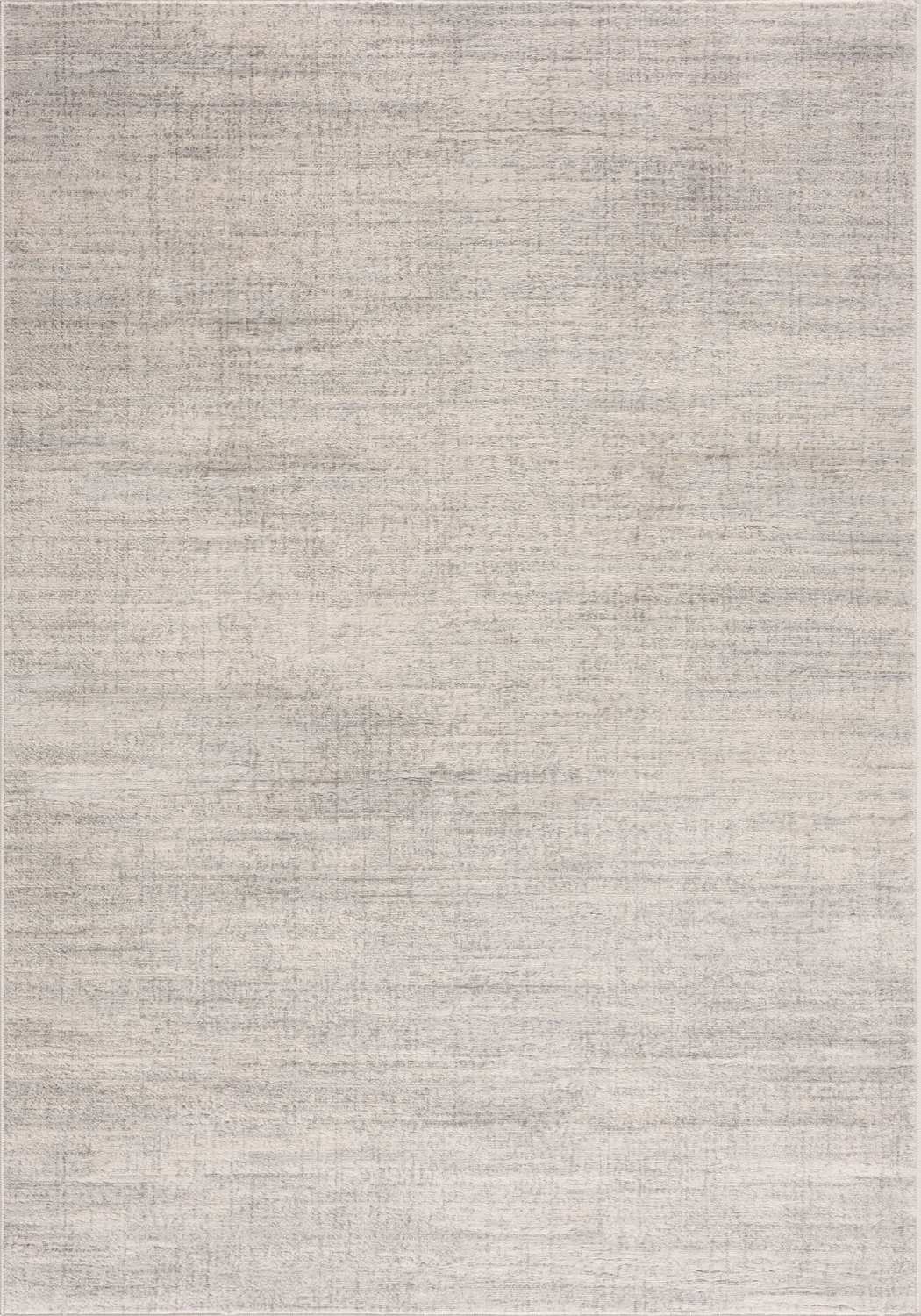
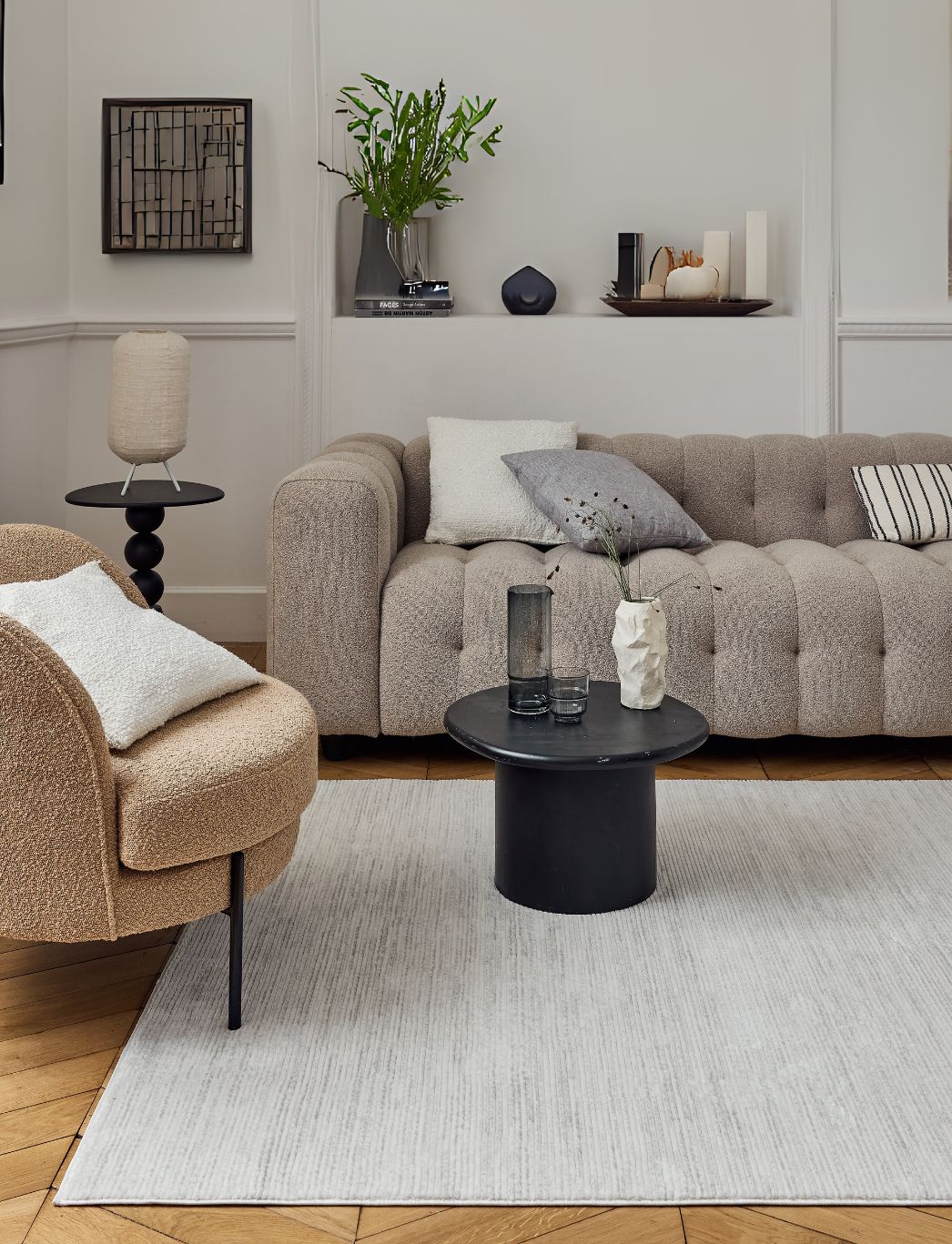
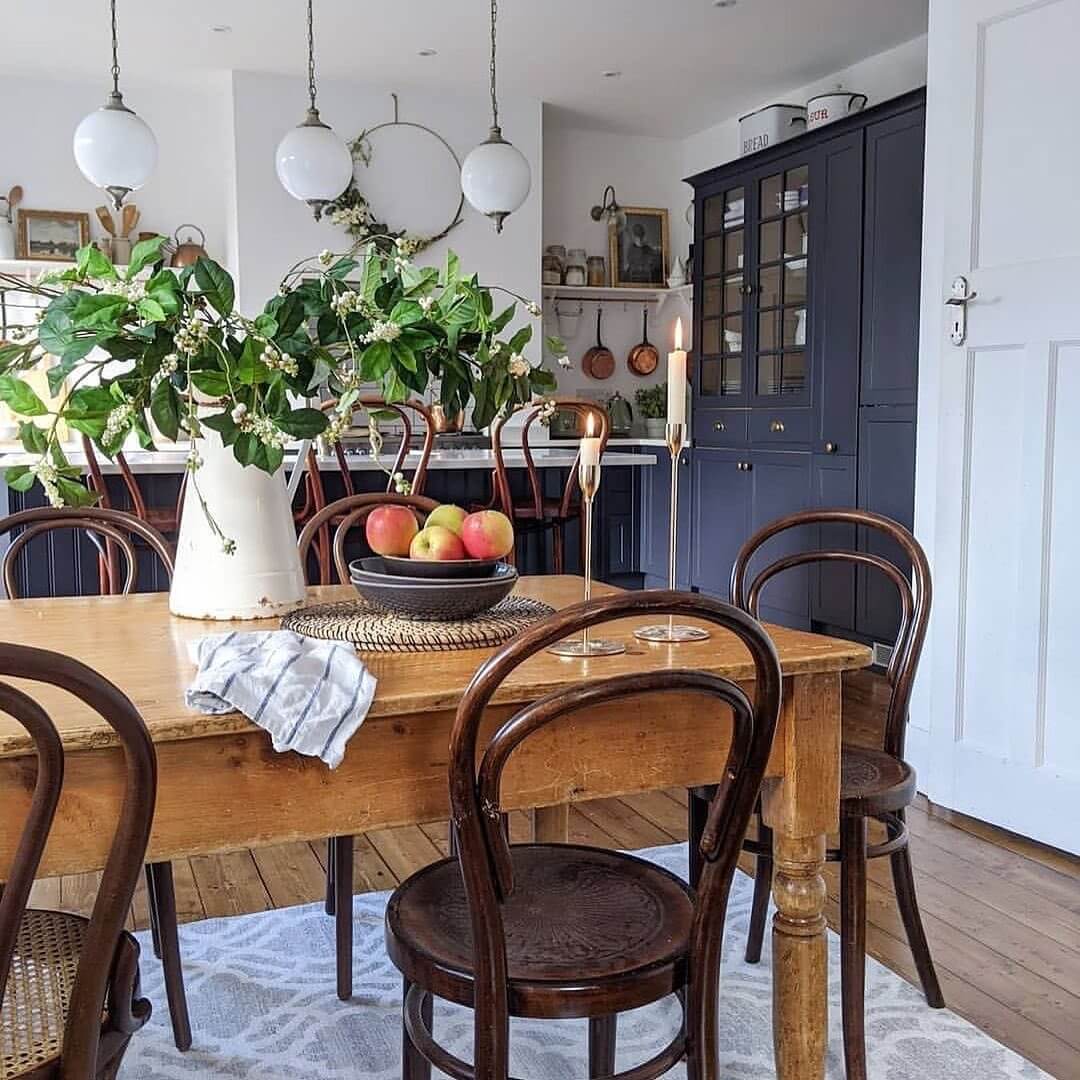
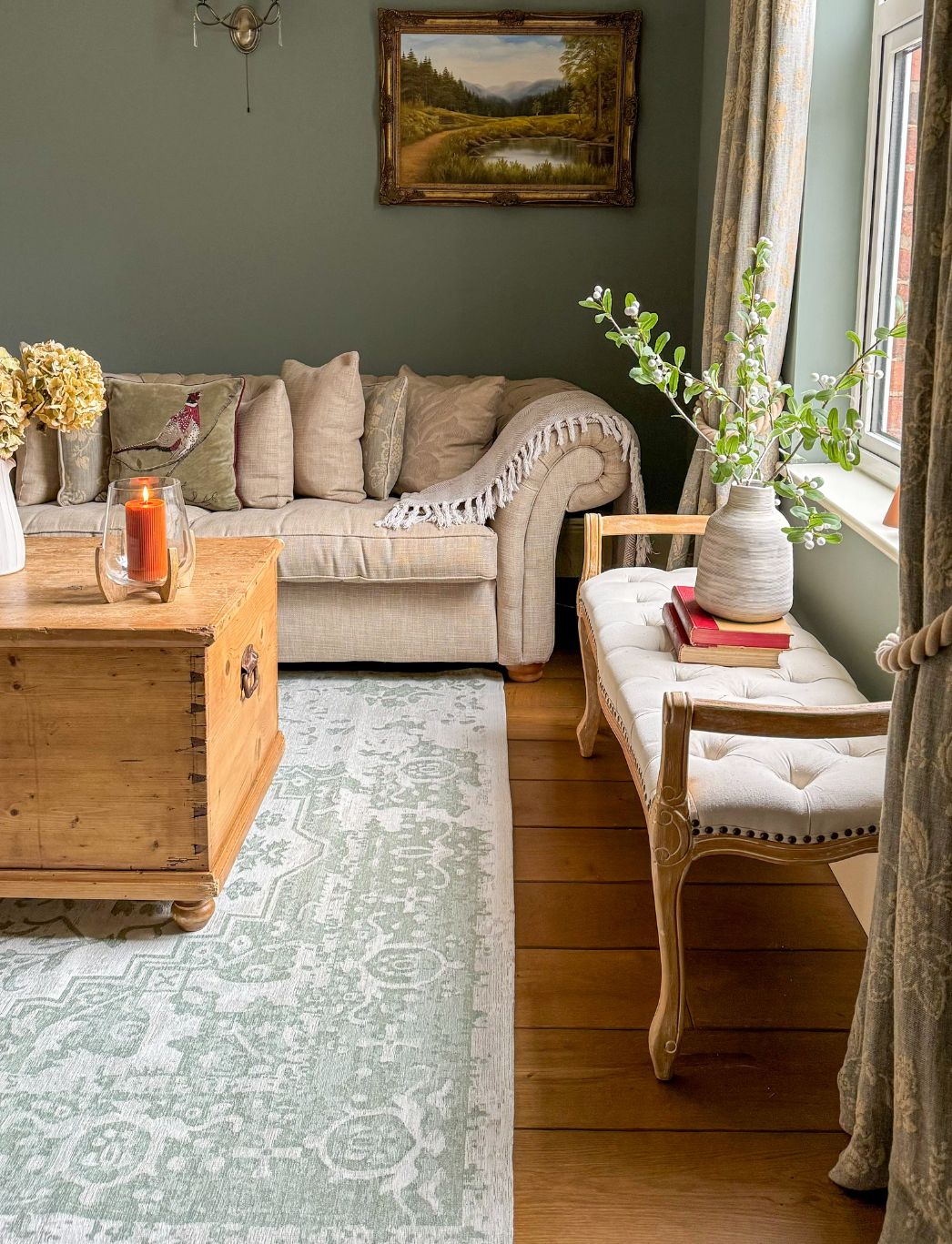
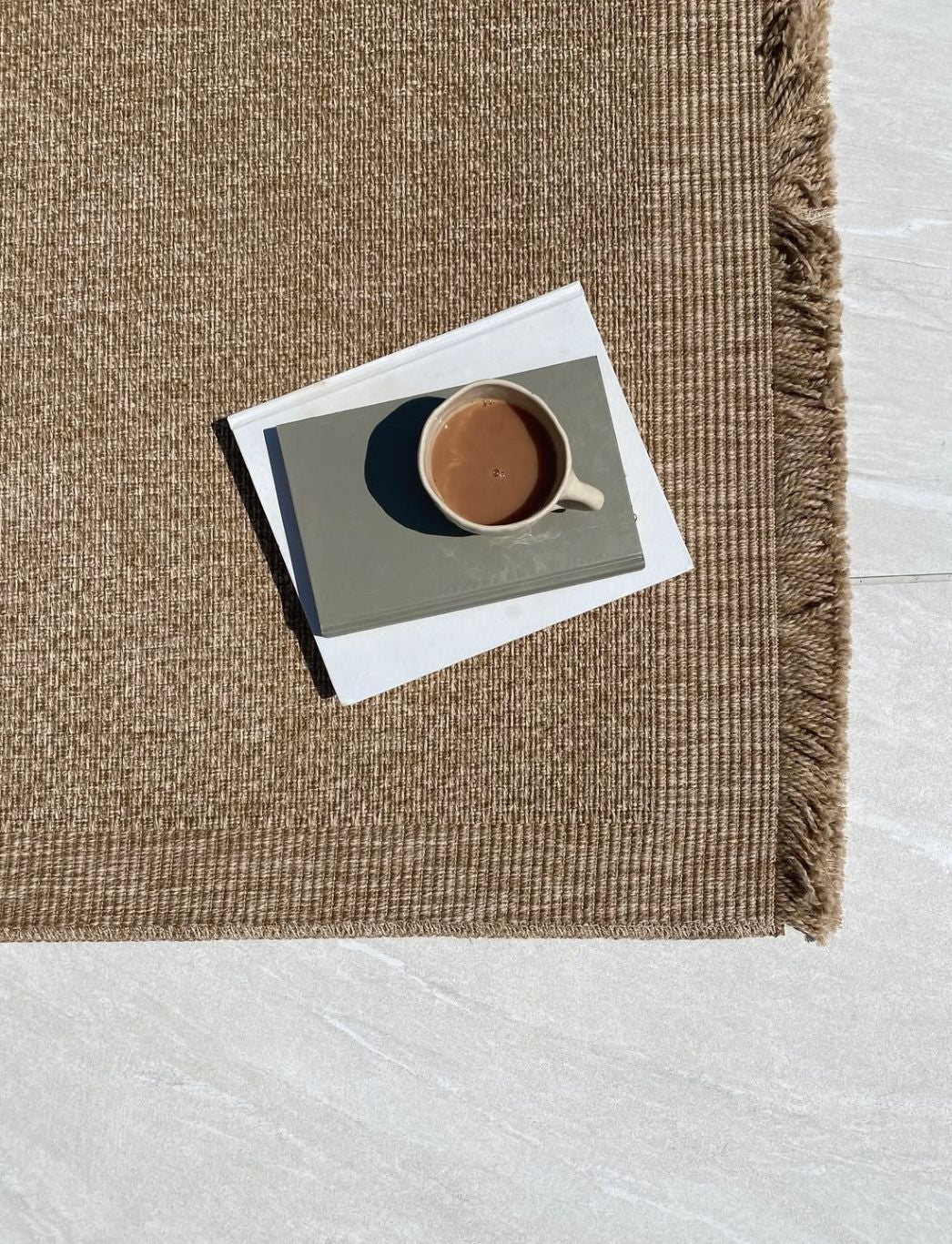
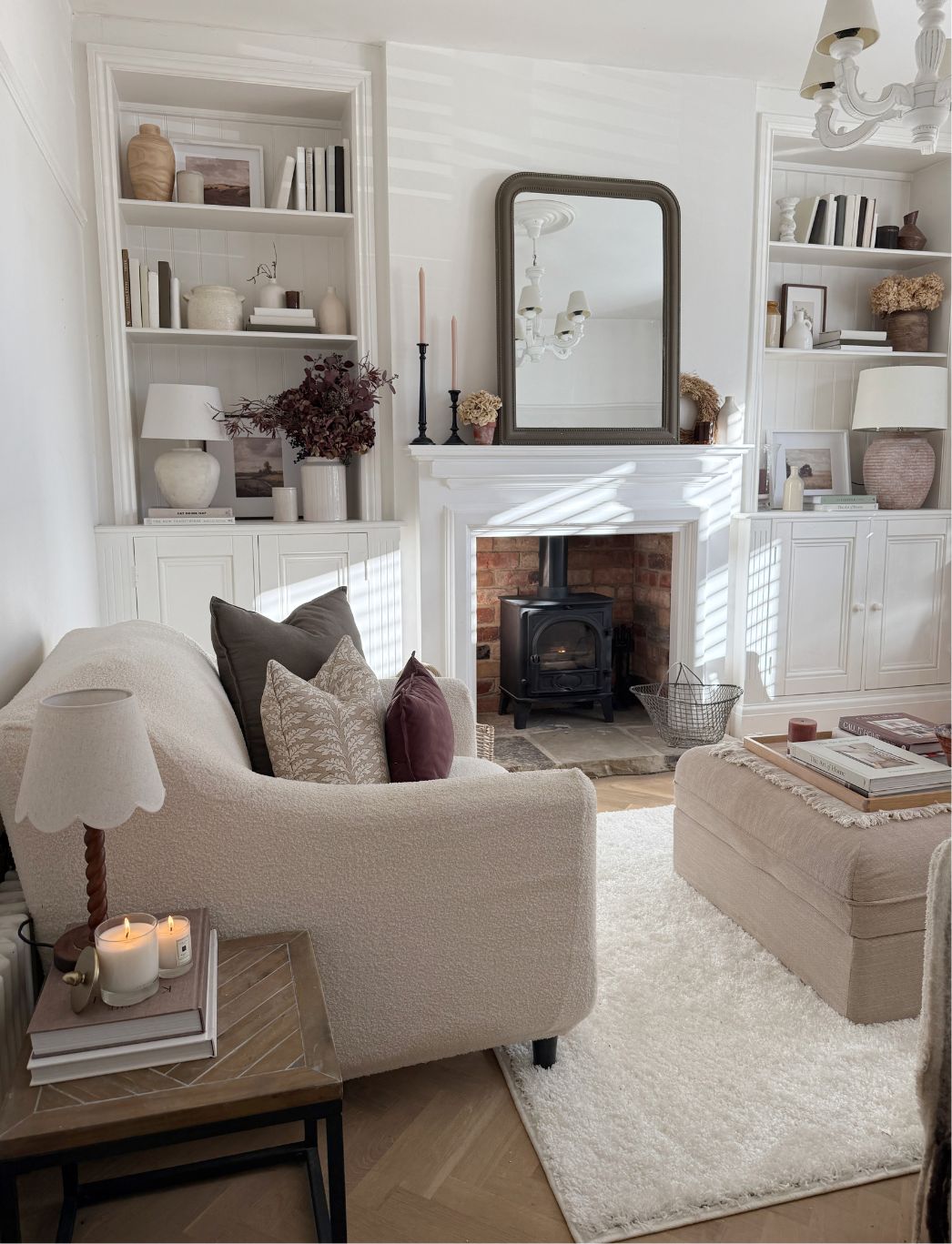
Leave a comment